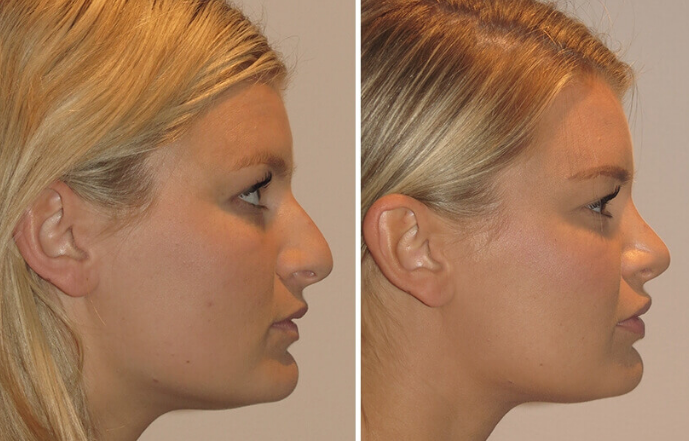Nose Implant in Argentina
Search and Compare the Best Clinics and Doctors at the Lowest Prices for Nose Implant in Argentina

Find the best clinics for Nose Implant in Argentina
No clinics available
Thailand offers the best prices Worldwide
Price: $ 192

- Home
- Argentina
WHY US?
At Medijump, we're making medical easy. You can search, compare, discuss, and book your medical all in one place. We open the door to the best medical providers worldwide, saving you time and energy along the way, and it's all for FREE, no hidden fees, and no price markups guaranteed. So what are you waiting for?

Free

Best Price

Widest Selection

Risk-Free
What you need to know about Nose Implant in Argentina

Nose implant, also known as Augmentation Rhinoplasty, is a cosmetic surgery to change the shape of the nose by placing an implant. The procedure is mostly performed to bring balance to the face since the nose is the most noticeable part of the face. The procedure can be carried out to enhance appearance or repair deformities from an injury or correct a birth defect.
What does a Nose Implant Procedure Involve?
Nose implant can be carried out under general anesthetic or local anesthetic with sedation, depending on the complexity of the surgery and your surgeon's preference. The procedure may be performed through a small incision inside the nostrils (closed rhinoplasty) or through a small external incision at the base of your nose (open rhinoplasty). After making the incision, your doctor will place the implant, which may be synthetic (Gore-Tex, Silicone, Medpor) or autologous (from other parts of your body, such as cartilage from your rib). The final step is placing the nose’s skin and tissue into its original position and stitching up the incisions.
How Long Should I Stay in Argentina for a Nose Implant Procedure?
If no complications arise, you should be able to leave the hospital on the same day. However, if general anesthesia is used during the surgery, you may need to stay overnight. After you are discharged from the hospital, expect to stay in Argentina for 10 to 14 days to attend regular follow-up checkups.
What's the Recovery Time for Nose Implant Procedures in Argentina?
You may experience swelling around your eyes, but this will gradually subside within 3 to 14 days. You should avoid strenuous activity (such as heavy lifting and intense exercise) for 3 to 6 weeks, but you may be able to return to work and some light activities in 1 to 2 weeks following the surgery. The full recovery time until your nose is completely healed is normally 6 months.
What sort of Aftercare is Required for Nose Implant Procedures in Argentina?
After your surgery, you will need to keep your head elevated to prevent aggravated swelling. Do not blow your nose and avoid extreme facial expressions for at least 10 to 14 days following the surgery. Your doctor will give you a recommended diet plan, which may include high-fiber foods such as vegetables and fruits to avoid constipation since constipation can cause strain to the surgery site.
What's the Success Rate of Nose Implant Procedures in Argentina?
Nose implant is known to have a high success rate of about 85% to 90%, particularly when performed by a certified plastic surgeon. Although the success rate is high, you need to be aware of the side effects and risks, such as bleeding, infection, difficulty breathing, permanent numbness around the nose, uneven-looking nose, pain, scarring, discoloration, septal perforation, and allergic reactions to the anesthesia.
Are there Alternatives to Nose Implant Procedures in Argentina?
If you do not want to undergo surgery but you want to change the appearance of your nose, your alternatives are fillers and Botox, which are non-invasive. Both are injected into the skin of your nose to change its shape.
What Should You Expect Before and After the Procedure
Before the nose implant, you may not like the shape, size, or the overall look of your nose, your nose may look smaller or large on your face. After a nose implant, the size of your nose can be augmented and made proportionately to fit your face, which will improve your overall appearance.
Whilst the information presented here has been accurately sourced and verified by a medical professional for its accuracy, it is still advised to consult with your doctor before pursuing a medical treatment at one of the listed medical providers
No Time?
Tell us what you're looking for and we'll reachout to the top clinics all at once
Enquire Now

Popular Procedures in Argentina
Prices Start From $404

Prices Start From $111

Prices Start From $70

Prices Start From $220

Prices Start From $1,945

Prices Start From $101

Prices Start From $101

Prices Start From $500

Recommended Medical Centers in Argentina for procedures similar to Nose Implant

- Interpreter services
- Translation service
- Religious facilities
- Medical records transfer
- Medical travel insurance
- Health insurance coordination
- TV in the room
- Safe in the room
- Phone in the room
- Private rooms for patients available

- Interpreter services
- Translation service
- Religious facilities
- Medical records transfer
- Medical travel insurance
- Health insurance coordination
- TV in the room
- Safe in the room
- Phone in the room
- Private rooms for patients available

- Interpreter services
- Translation service
- Religious facilities
- Medical records transfer
- Medical travel insurance
- Health insurance coordination
- TV in the room
- Safe in the room
- Phone in the room
- Private rooms for patients available

- Interpreter services
- Translation service
- Religious facilities
- Medical records transfer
- Medical travel insurance
- Health insurance coordination
- TV in the room
- Safe in the room
- Phone in the room
- Private rooms for patients available
Nose Implant in and around Argentina
Introduction
Argentina is beautiful and intriguing, the country’s cultural diversity, coupled with its beautiful nature, ensures a wide-ranging natural and cultural experience for tourists. Today, Argentina is emerging as one of the most important destinations in the world for medical tourism. Today, you will find highly-experienced healthcare professionals, medical centers with cutting-edge technology, personalized patient care, and high-quality services. The majority of medical tourists in this country arrive from Latin American countries, the USA, and Canada. These medical tourists travel to Argentina to undergo dentistry, bariatric surgery, breast implants, and ophthalmology.
Popular Cities and Regions in Argentina
Known as the ‘Paris of South America,’ Buenos Aires is the capital and largest city in Argentina. It is known for its heavy European influence, which makes it diverse and vibrant. In this lively city, you will be welcomed with a dynamic food scene, magnificent architecture, colorful murals, lively nightlife, and glamorous tango. One of the most popular places in Argentina, besides Buenos Aires, in Córdoba, which is a fascinating city with a blend of old and new. In this city, you can find DJs spinning electro-tango next to 17th century Jesuit ruins. Another famous tourist destination is Mendoza. Filled with atmospheric plazas, leady avenues, and cosmopolitan cafes, this city captivates its tourists by its laid-back vibe. Those looking to relax on a beach should definitely visit Mar del Plata or Pinamar, where you can soak up some sun and have a lot of fun.
Transport in Argentina
Ezeiza International Airport is the largest airport in Argentina, located in Greater Buenos Aires. It connects the country with almost every country in the world, such as the US, Mexico, France, the UK, and the UAE. Since Argentina is very large, traveling around the country is easier with domestic flights. However, buses are popular among those who want to appreciate the country’s landscape. The best way to travel inside cities is by renting a car.
Visas in Argentina
Citizens of several countries, including Brazil, Ecuador, and the US, can visit and stay in Argentina without a visa for up to 90 days. Most other nationalities need to apply and obtain a visa to enter the country.
Weather in Argentina
Given the immense size of the country, the weather varies widely from one region to another. Buenos Aires tends to be hot from December to March, but it is very pleasant to visit between July and August. The south of Argentina is nice to visit from December to March, while July and August tend to be very cold. North Argentina has three climate zones and areas around the Iguazu Falls are generally tropical with humid weather.
Additional Info
- Local Currency: Argentine peso (ARS) is the official currency. 1 USD is equivalent to 62 ARS.
- Money & Payments: You can find ATMs in nearly every city in Argentina. Most hotels, restaurants, and stores in major cities accept credit cards (Visa and MasterCard).
- Local Language: Spanish is the main language in the country. English is also widely spoken as it is obligatory in primary school.
- Local Culture and Religion: Argentina is an overwhelmingly Christian country. Only a small percentage of the population practices other religions, such as Buddhism, Hinduism, Islam, and Judaism.
- Public holidays: Public holidays in Argentina usually include Catholic based holidays, such as Christmas, although other religious holidays such as the Islamic New Year is celebrated. The country also celebrates historic holidays, such as Independence Day.
Popular Searches
- Plastic Surgery in Thailand
- Dental Implants in Thailand
- Hair Transplant in Thailand
- Breast Augmentation Thailand
- Gastric Sleeve in Thailand
- Gender Reassignment Surgery in Thailand
- Laser Hair Removal in Bangkok
- Botox in Bangkok
- Dermatology in Bangkok
- Breast Augmentation in Bangkok
- Coolsculpting in Bangkok
- Veneers in Turkey
- Hair Transplant in Turkey
- Rhinoplasty in Turkey
- Stem Cell Therapy in Mexico
- Rhinoplasty in Mexico
- Liposuction in Mexico
- Coolsculpting in Tijuana
- Rhinoplasty in Korea
- Scar Removal in Korea
- Gastric Sleeve in Turkey
- Bone Marrow Transplant in India
- Invisalign in Malaysia
- Plastic Surgery in the Dominican Republic
- Tummy Tuck in the Dominican Republic
- Plastic and Cosmetic Surgery in Poland
- Rhinoplasty in Poland
- Hair Implant in Poland
- Dental Implants in Poland
- IVF in Turkey